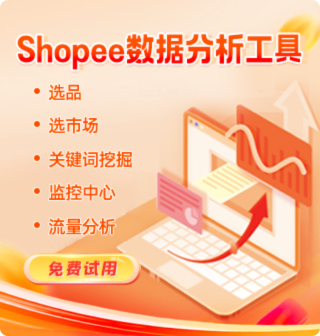-
用户145****5970
Cross-Border E-commerce on Shopee: Unlocking Regional and Global Opportunities
Cross-border e-commerce has become a pivotal driver of growth in the global online retail industry, allowing sellers to reach customers beyond their domestic markets and buyers to access a wider range of products from around the world. As one of the leading e-commerce platforms in Southeast Asia, Shopee has positioned itself as a major facilitator of cross-border trade, leveraging its technological infrastructure, logistics network, and localized market knowledge. This article provides an in-depth exploration of Shopee’s cross-border e-commerce ecosystem, its benefits and challenges, and practical insights for sellers and buyers interested in this increasingly important segment.
Understanding Cross-Border E-commerce on Shopee
Shopee’s cross-border e-commerce model enables sellers from one country to list and sell products directly to consumers in other countries where Shopee operates. This model effectively removes geographical barriers that traditionally limited trade, enabling small and medium-sized enterprises (SMEs) as well as large brands to expand their market reach.
Unlike purely domestic e-commerce, cross-border commerce requires additional considerations such as international logistics, customs clearance, foreign currency payments, and compliance with local regulations. Shopee addresses these complexities by providing sellers with integrated tools and services to navigate them more easily.
Shopee’s Cross-Border Ecosystem: Key Components
1. Multi-Country Marketplaces
Shopee operates in multiple countries across Southeast Asia (Indonesia, Malaysia, Philippines, Singapore, Thailand, Vietnam) and Taiwan, allowing sellers and buyers to connect across borders on a single platform.
2. Seller Support and Onboarding
Shopee provides dedicated onboarding support for cross-border sellers, including assistance with product localization, market research, and compliance with relevant trade regulations. This helps sellers tailor their offerings to local consumer preferences and legal requirements.
3. Payment and Currency Handling
Shopee facilitates international transactions by supporting multiple currencies and popular local payment methods, reducing friction in payment processing for both buyers and sellers.
4. International Logistics Solutions
Shopee has developed partnerships with global and regional logistics providers to streamline shipping, customs clearance, and last-mile delivery. Services such as Shopee’s fulfillment centers and consolidated shipping help reduce delivery time and cost.
5. Buyer Protection and Dispute Resolution
To foster trust in cross-border purchases, Shopee offers buyer protection policies, including refunds, returns, and dispute mediation, ensuring a safer shopping experience despite the geographical distance.
Advantages of Cross-Border E-commerce on Shopee
Market Expansion: Sellers can tap into new customer bases without setting up physical stores or subsidiaries abroad.
Product Variety: Buyers gain access to diverse products that may not be locally available, increasing choice and satisfaction.
Cost Efficiency: Centralized platform management and logistics partnerships allow sellers to optimize costs.
Brand Exposure: Cross-border sales help brands build international recognition and credibility.
Data Insights: Sellers receive valuable data on consumer behavior across different markets, enabling better business strategies.
Challenges to Consider
Customs and Regulatory Compliance: Navigating import/export restrictions, taxes, and certification requirements can be complex.
Shipping Time and Costs: International shipping remains slower and more expensive compared to domestic delivery, affecting customer satisfaction.
Language and Cultural Barriers: Effective localization of listings and customer service is needed to connect with diverse buyers.
Returns and Refunds Management: Handling returns across borders can be logistically and financially challenging.
Currency Fluctuations: Variations in exchange rates can impact pricing and profitability.
Practical Tips for Sellers Engaging in Shopee Cross-Border E-commerce
1. Research Target Markets Thoroughly
Analyze local demand, competitor pricing, and consumer preferences before entering a new country. Use Shopee’s market reports or third-party data tools for informed decisions.
2. Optimize Product Listings for Localization
Translate product titles, descriptions, and specifications into local languages accurately. Incorporate local cultural references where appropriate to increase engagement.
3. Leverage Shopee’s Cross-Border Logistics
Choose logistics options supported by Shopee that offer tracking, reliable delivery times, and customs clearance assistance. Consider using Shopee’s fulfillment centers if available.
4. Price Competitively but Profitably
Factor in shipping, customs duties, platform fees, and currency conversions when setting prices to maintain healthy margins.
5. Provide Prompt Multilingual Customer Service
Respond quickly to inquiries and complaints in the buyer’s language to build trust and positive reviews.
6. Monitor Regulatory Changes
Stay updated on import regulations, tariff changes, and compliance requirements in target markets to avoid operational disruptions.
Tips for Buyers Purchasing Cross-Border on Shopee
Check Seller Ratings and Reviews: Focus on highly rated sellers with positive feedback on international shipping and product quality.
Review Shipping Times and Policies: Cross-border deliveries often take longer; be aware of estimated delivery times before purchasing.
Understand Return and Refund Procedures: Confirm the seller’s policy on returns and refunds for cross-border orders to avoid future issues.
Watch for Customs Fees: Be prepared for potential import duties or taxes imposed by your country’s customs authority.
Use Shopee’s Buyer Protection: Make use of Shopee’s dispute resolution if the product is damaged, not as described, or not delivered.
Shopee Cross-Border E-commerce: Regional Impact and Future Trends
Shopee’s cross-border e-commerce operation is accelerating regional economic integration by enabling SMEs to compete internationally and consumers to benefit from global product access. It contributes to the digital economy growth by fostering cashless payments, logistics innovation, and digital entrepreneurship.
Looking ahead, Shopee is likely to deepen investments in AI-powered localization, expand its logistics network with faster shipping options, and explore partnerships with customs authorities to simplify clearance processes. Additionally, expanding seller financial services such as trade financing and cross-border payment solutions will further empower merchants.
Conclusion
Shopee’s cross-border e-commerce platform offers immense opportunities for sellers aiming to grow beyond their domestic borders and for buyers seeking greater product variety and value. By addressing key challenges through platform tools, logistics partnerships, and localized services, Shopee enables a smoother and more efficient international shopping experience.
For sellers, success in cross-border trade on Shopee requires careful market analysis, localization, and attention to logistics and customer service. For buyers, understanding the nuances of cross-border transactions ensures informed purchasing decisions.
As cross-border e-commerce continues to expand, Shopee’s role as a facilitator and innovator will remain crucial in shaping the future of regional and global digital trade.

